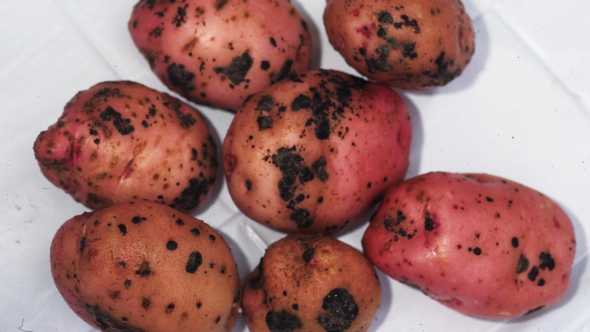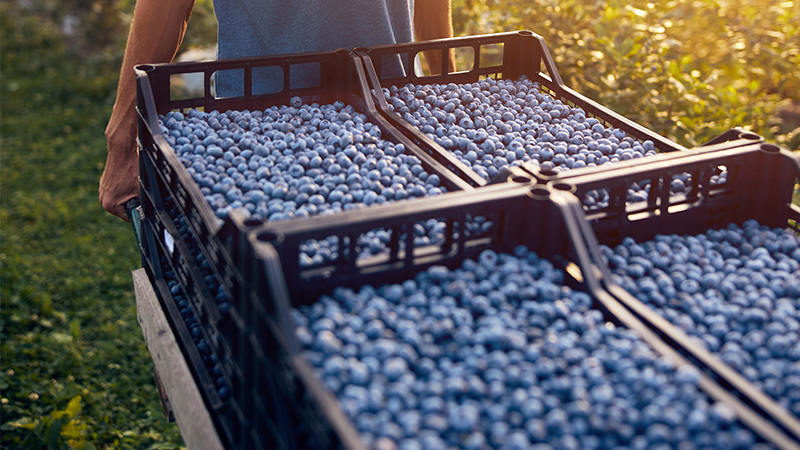Protect Potatoes From Black Scurf And Stem Canker
Disease Specs
Black scurf and stem canker of potato are caused by the fungus Rhizoctonia solani Kuhn. R. solani is a cosmopolitan fungus and has a broad host range, but the strains that attack potato (mainly AG-3) generally do not attack other hosts.

Photo by Gerald Holmes
Identification
Symptoms can be observed on all plant parts. Black scurf is the most conspicuous. In this phase, the fungus forms dark brown to black hard sclerotia on the surface of the tuber. These may range from small, flat, barely visible blotches to large, raised, irregularly shaped masses. Although these structures adhere tightly to the tuber skin, they are superficial and do not penetrate or damage the tuber, even in storage.
Although black scurf is the most noticeable sign of Rhizoctonia, stem canker is the most damaging as it occurs under ground and often goes unnoticed. Early in the season, the fungus attacks germinating sprouts under ground before they emerge from the soil. The sprout might be killed outright if lesions form near the growing tip. Damage at this stage results in delayed emergence and poor uneven stands with weakened plants.
Survival And Spread
R. solani is a soil pathogen and is affected by soil conditions. Black scurf and stem canker are more severe in soils that are cool and moist. Development of these diseases is favored by soil temperatures between 60°F to 75°F, while warmer temperatures reduce the severity of canker. The disease also tends to be more severe on dry light soils.
The sexual stage of this pathogen can be found in infected potato plants but the role of basidiospores in the epidemiology of the disease is unclear. It is believed sclerotia are responsible for long distance dispersal. Sclerotia formed at the end of the cropping season, allowing the fungus to overwinter. The fungus also can survive on infested tubers left on the ground, soil, and debris.
Management Methods
Management of the disease should not rely solely on chemical control but should combine several integrated management strategies.
Low pH is not conducive for disease development. Growers should conduct a soil test prior to crop establishment and adjust soil pH as necessary.
Avoid areas with history of potato production or history of the disease. Long rotations of three or more years will significantly reduce the amount of inoculum of R. solani in the soil.
Use certified potato seed. Seed treatments and application of fungicides in-furrow at planting provides significant control of this disease.
Shallow planting in warm soil and covering seed pieces with as little soil as possible speeds sprout and stem development and emergence and reduces the risk of stem canker.
Timely harvest is important as the percent of tubers covered with sclerotia increases as the interval between vine kill and harvest is lengthened.
Trichoderma and other biological control agents might help reduce severity.
There are differences in susceptibility among cultivars, however resistant cultivars are not available.
Consult UF/IFAS recommendations for currently labeled fungicides for Rhizoctonia control in Florida potatoes.










